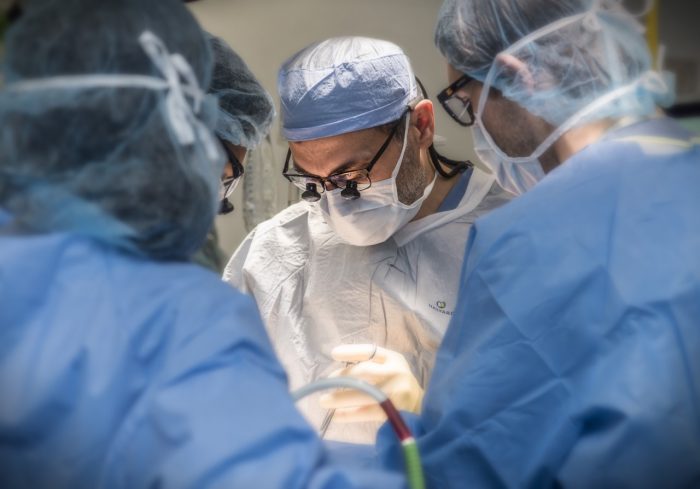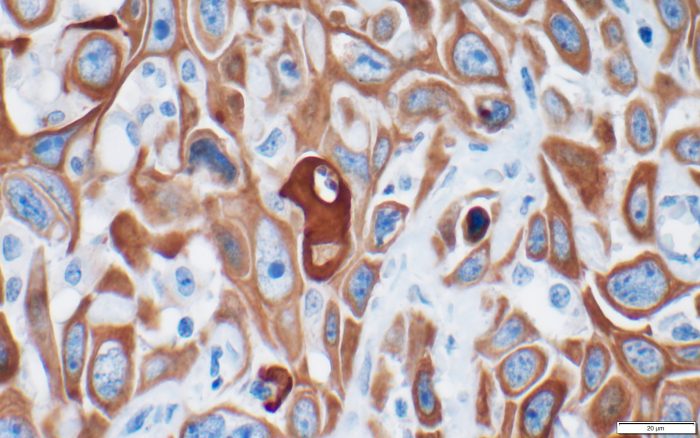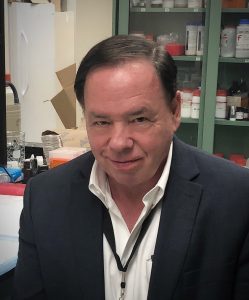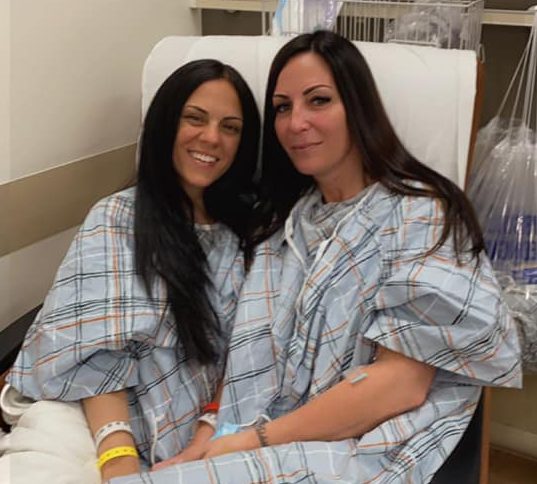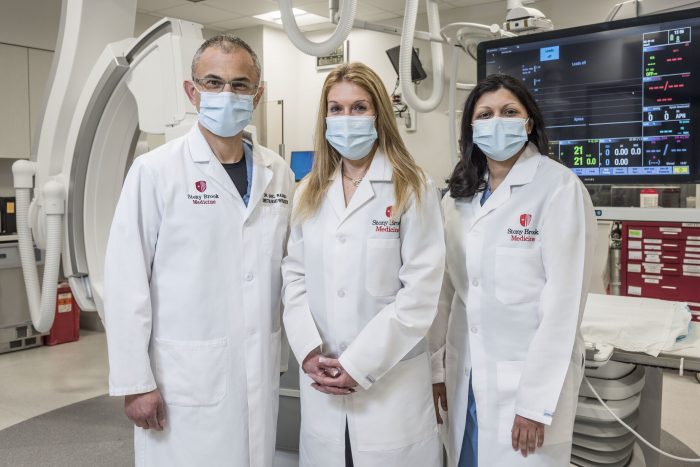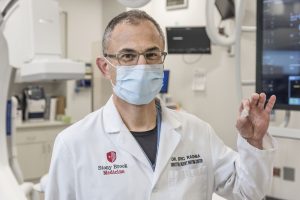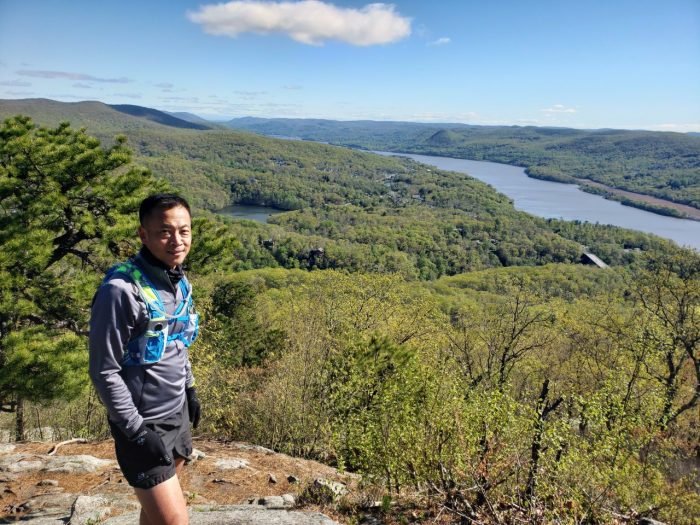The Cardiothoracic Surgery Division at Stony Brook University Heart Institute has earned a distinguished three-star rating from The Society of Thoracic Surgeons (STS) for its patient care and outcomes in isolated coronary artery bypass grafting (CABG) procedures in 2020. The three-star rating, which denotes the highest category of quality, places Stony Brook University Hospital among the elite for heart bypass surgery in the United States and Canada. The Stony Brook Heart Institute received two back-to-back three-star ratings from The Society of Thoracic Surgeons (STS) in 2017 and 2018, and now an overall three-star rating for 2020.
“This elite rating is reflective of our entire organization’s commitment to quality and safety — from preoperative planning to thorough coordination among multidisciplinary team members — for the optimal outcome for the patient receiving cardiac care,” says Margaret McGovern, MD, PhD, Dean for Clinical Affairs and Vice President, Health System Clinical Programs.
“At Stony Brook, we take great pride in our comprehensive heart program that has a long legacy of bringing the highest quality standards to benefit our patients and their families,” says Carol Gomes, Chief Executive Office, Stony Brook University Hospital. “And we remain laser-focused on serving our community with the most advanced technology, our outstanding cardiovascular staff and the full spectrum of lifesaving cardiac interventions.”
“The three-star rating is a testament to our team’s deep commitment to bringing the best in cardiac care to our community,” says Henry J. Tannous, MD, Co-Director of the Heart Institute, Chief of Cardiothoracic Surgery and General T.F. Cheng Chair, Cardiothoracic Surgery, Renaissance School of Medicine at Stony Brook University. “Patients can have peace of mind knowing they’re getting care from one of the top-rated facilities in the nation.”
The STS star rating system is one of the most sophisticated and highly regarded overall measures of quality in health care, rating the benchmarked outcomes of cardiothoracic surgery programs across the United States and Canada. The star rating is calculated using a combination of quality measures for specific procedures performed by an STS Adult Cardiac Surgery Database participant. For 2020, 6.1% of participants received the three-star rating for isolated CABG surgery.
“The Society of Thoracic Surgeons congratulates STS National Database participants who have received three-star ratings,” said David M. Shahian, MD, chair of the Task Force on Quality Measurement. “Participation in the Database and public reporting demonstrates a commitment to quality improvement in health care delivery and helps provide patients and their families with meaningful information to help them make informed decisions about health care.”
The STS National Database was established in 1989 as an initiative for quality improvement and patient safety among cardiothoracic surgeons. The Database includes four components: the Adult Cardiac Surgery Database (ACSD), the Congenital Heart Surgery Database (CHSD), the General Thoracic Surgery Database (GTSD), and the mechanical circulatory support database (Intermacs). The STS ACSD houses approximately 7.4 million surgical records and gathers information from more than 3,500 participating physicians, including surgeons and anesthesiologists from more than 90% of groups that perform heart surgery in the US. STS public reporting online enables STS ACSD participants to voluntarily report to each other and the public their heart surgery scores and star ratings.
“The STS rating is based on the Division of Cardiothoracic Surgery’s experience in coronary artery bypass grafting (CABG) surgery, and we believe that the quality and expertise illustrated by the top rating is reflective of the entire Heart Institute’s dedication to excellence in patient care,” says Dr. Tannous.
About Stony Brook University Heart Institute:
Stony Brook University Heart Institute is located within Stony Brook University Hospital as part of Long Island’s premier university-based medical center. The Heart Institute offers a comprehensive, multidisciplinary program for the prevention, diagnosis and treatment of cardiovascular disease. The staff includes full-time and community-based, board-certified cardiologists and cardiothoracic surgeons, as well as specially trained anesthesiologists, nurses, physician assistants, nurse practitioners, respiratory therapists, surgical technologists, perfusionists, and other support staff. Their combined expertise provides state-of-the-art interventional and surgical capabilities in 24-hour cardiac catheterization labs and surgical suites. And while the Heart Institute clinical staff offers the latest advances in medicine, its physician-scientists are also actively enhancing knowledge of the heart and blood vessels through basic biomedical studies and clinical research. To learn more, visit www.heart.stonybrookmedicine.edu.
About STS:
The Society of Thoracic Surgeons (STS) is a not-for-profit organization that represents more than 7,500 surgeons, researchers, and allied health care professionals worldwide who are dedicated to ensuring the best possible outcomes for surgeries of the heart, lung, and esophagus, as well as other surgical procedures within the chest. The Society’s mission is to advance cardiothoracic surgeons’ delivery of the highest quality patient care through collaboration, education, research, and advocacy.

